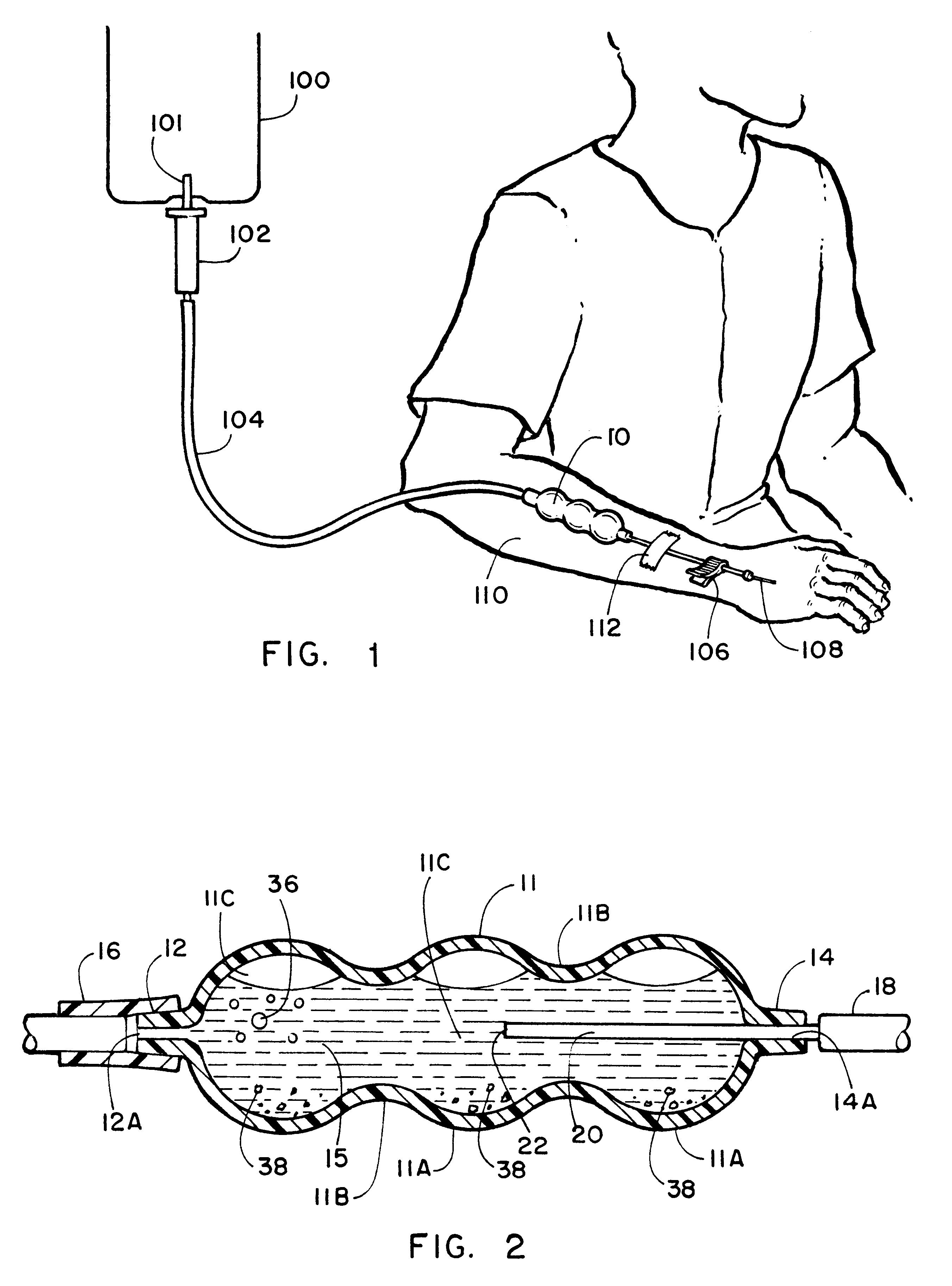Gas and solid trap for an intravenous line
- Summary
- Abstract
- Description
- Claims
- Application Information
AI Technical Summary
Benefits of technology
Problems solved by technology
Method used
Image
Examples
Embodiment Construction
Referring now to the drawing FIGS. 1 through 8 depict current preferred embodiments of the gas and solid trapping apparatus according to the present invention by reference to the drawings. FIG. 1 shows a diagrammatic view of an intravenous fluid transfusion set with the device 10 herein disclosed inserted into an intravenous line. Reference numeral 100 shows a main vessel arranged at a higher place than the patient to provide a gravity feed. The main vessel may be a transfusion bottle or bag. The main vessel 100 is connected through a penetrating needle 101 to the fluid transfusion set which is connected through a dip chamber 102 and gas trap 10 to an injection needle 108. As generally provided with a gas trap device 10 there is provided a clamp 106. The opening and closing of the clamp 106 controls the flow of the desired amount of liquid to be injected through the injection needle 108 into a human or animal body limb such as, but not restricted to, the hand 110. The device 10 may ...
PUM
| Property | Measurement | Unit |
|---|---|---|
| Volume | aaaaa | aaaaa |
| Volume | aaaaa | aaaaa |
| Volume | aaaaa | aaaaa |
Abstract
Description
Claims
Application Information
 Login to View More
Login to View More - R&D
- Intellectual Property
- Life Sciences
- Materials
- Tech Scout
- Unparalleled Data Quality
- Higher Quality Content
- 60% Fewer Hallucinations
Browse by: Latest US Patents, China's latest patents, Technical Efficacy Thesaurus, Application Domain, Technology Topic, Popular Technical Reports.
© 2025 PatSnap. All rights reserved.Legal|Privacy policy|Modern Slavery Act Transparency Statement|Sitemap|About US| Contact US: help@patsnap.com



